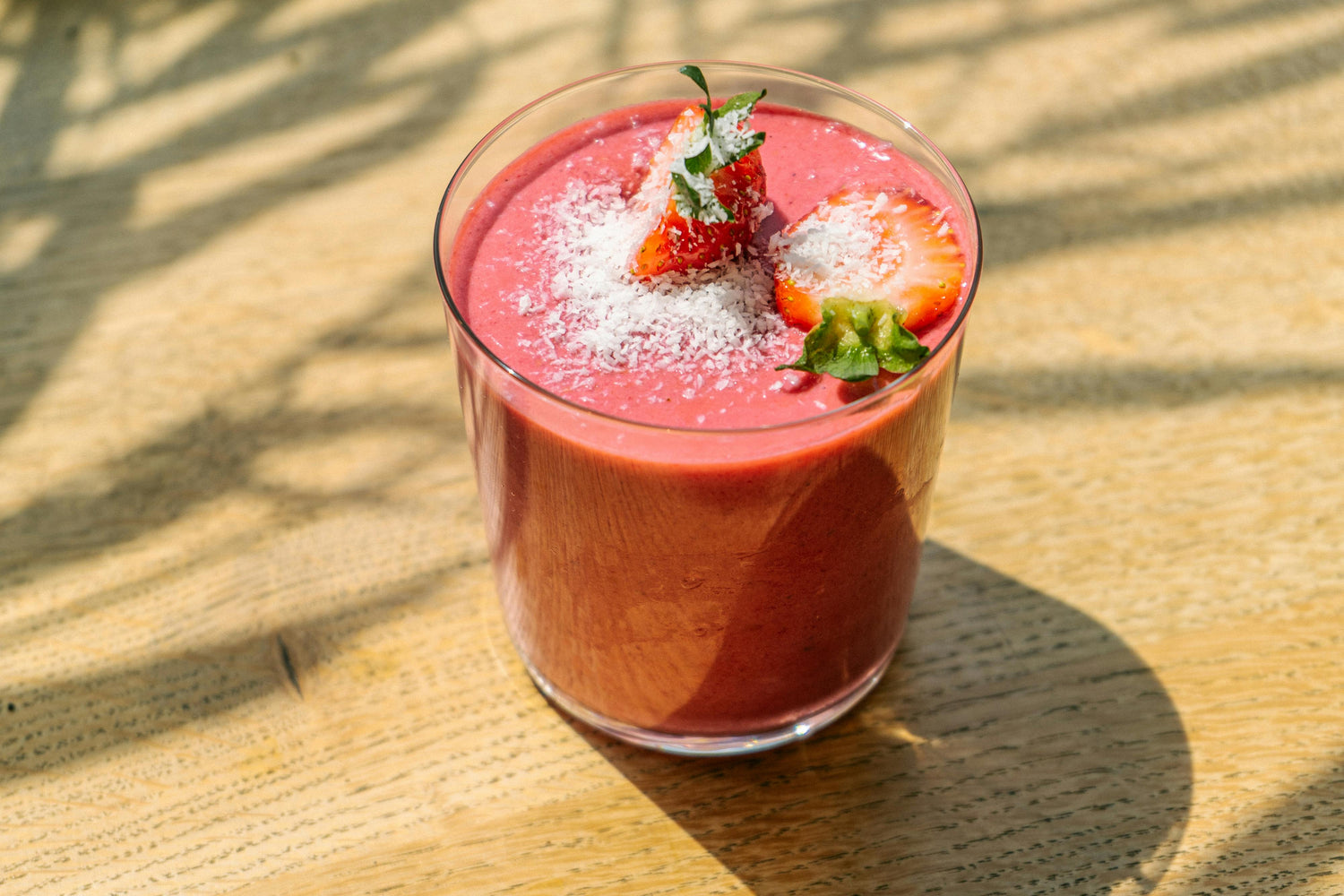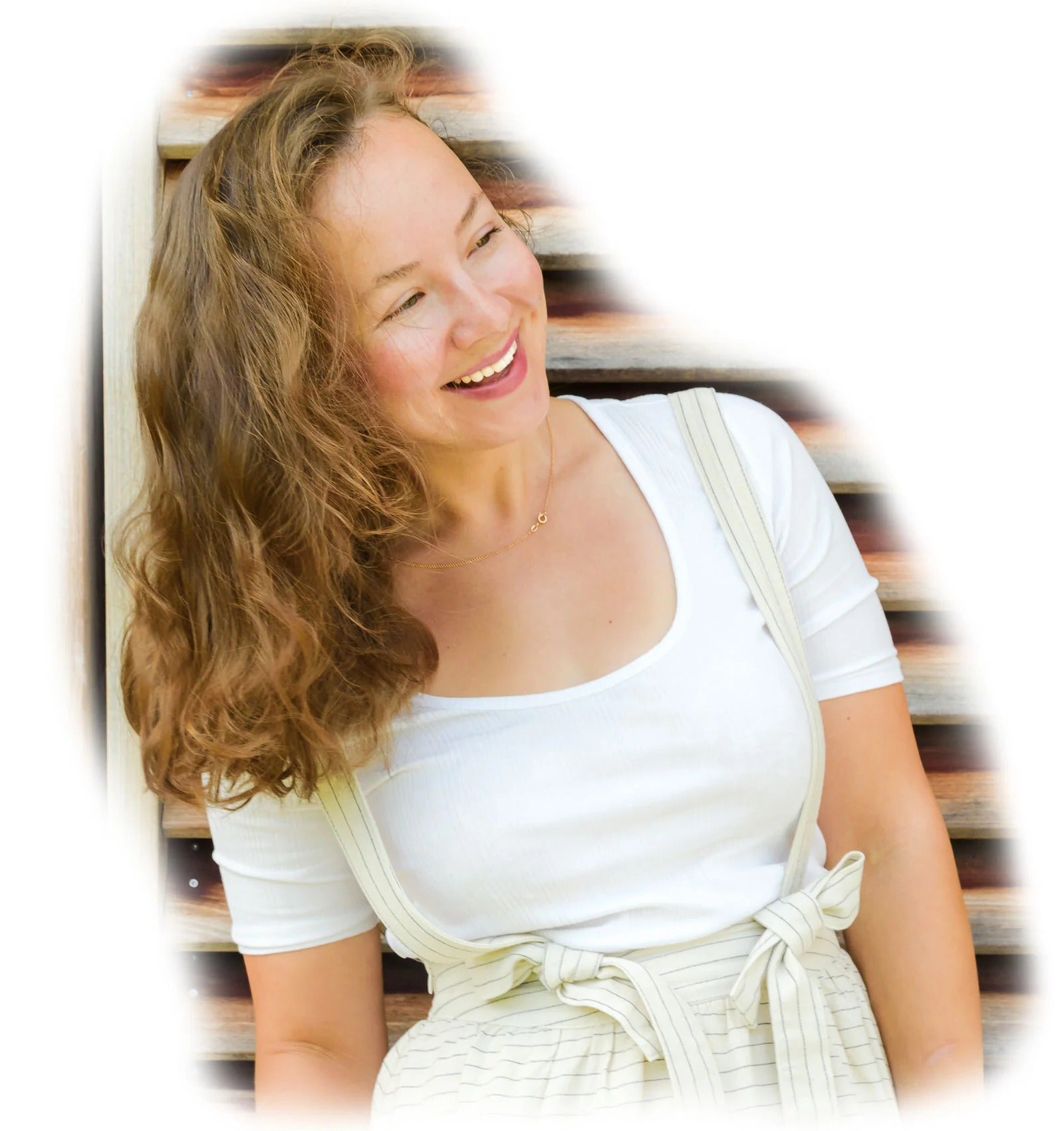
Nourishing You, Protecting Your Baby: A Guide to Breastfeeding-Safe Skincare
Medical Note: This article shares research-based information about skincare during breastfeeding. As always, consult your healthcare provider about your specific situation. This content is for informational purposes only and not a substitute for professional medical advice.
What You'll Discover
That precious bundle in your arms changes everything – including how you scrutinize every moisturizer label.
As a new mother, you deserve effective skincare that makes you feel radiant without compromising your baby's wellbeing. This guide illuminates the path forward with evidence-based recommendations from 50+ medical sources.
Why Your Skincare Choices Matter While Nursing
The Science: When you're breastfeeding, your body becomes your baby's primary source of nourishment. There are two primary pathways of potential exposure. The first is **systemic absorption**, where a topically applied chemical is absorbed through the skin into your bloodstream and could potentially pass into your breast milk.[1, 2] The absorption rate depends on molecular size, concentration, application area, and skin condition.[3]
The second, more common pathway is **direct infant contact**, where a baby might ingest a product by licking your skin or develop irritation from skin-to-skin contact, especially with products applied to the chest or neck.[4, 5] This is why choosing the right skincare during lactation isn't about paranoia – it's about informed caution.[6]
🔑 Key Takeaway:
Most skincare absorption happens through direct contact, not systemic absorption. Simple precautions like avoiding the chest/neck area can significantly reduce risks.
Skincare Ingredients to Avoid or Use with Caution
Certain actives deserve extra caution during nursing. Here's what experts recommend avoiding:
1. Retinoids (Retinol, Tretinoin, Adapalene)
These vitamin A derivatives are anti-aging powerhouses, but high-dose *oral* retinoids are known to cause severe birth defects.[7] This strict recommendation is based on the precautionary principle; while systemic absorption from topical use is likely low, the potential for harm is so great that experts universally recommend avoiding them during breastfeeding.[8, 9, 10]
Skip: Any product listing retinol, retinyl palmitate, tretinoin, or adapalene.
2. Hydroquinone
This skin-lightening agent has a uniquely high systemic absorption rate. A human in vivo study found that after 24 hours, the bioavailability from a 2% cream was approximately 45%.[11] Due to this high absorption and limited safety data for nursing mothers, it's best avoided.[12, 13]
Skip: Prescription lightening creams and some over-the-counter melasma treatments.
3. High-Dose Salicylic Acid
The concern with salicylic acid stems from its chemical relation to aspirin; high doses of oral salicylates are associated with a rare but serious condition in infants called Reye's syndrome.[14] For this reason, high-dose treatments like chemical peels should be avoided.[15] However, low concentrations (2% or less) in wash-off cleansers or spot treatments are generally considered safe, as systemic absorption is negligible.[16] Never apply to areas where your baby might have direct skin contact.[17]
Safe: ≤2% cleansers & spot treatments | Skip: Chemical peels, body treatments
4. Parabens
These common preservatives are known endocrine-disrupting chemicals (EDCs) that can mimic the hormone estrogen.[18, 19] Multiple studies have detected parabens in human breast milk, confirming that maternal use of paraben-containing products leads to infant exposure.[20, 21, 22] While debate continues, many experts recommend choosing paraben-free options.[23]
Skip: Products listing methylparaben, propylparaben, butylparaben, or ethylparaben.
❌ Quick Reference: Never Use
- • Retinoids (all forms)
- • Hydroquinone
- • High-dose salicylic acid
- • Parabens
- • Formaldehyde releasers
- • Oxybenzone
- • Phenoxyethanol (in nipple creams)
Your Breastfeeding-Safe Skincare Arsenal
Great news! Many powerful ingredients are completely safe while nursing:
🌟 Brightening & Anti-Aging
Vitamin C
A potent antioxidant that brightens skin, boosts collagen production, and protects against environmental damage. It is considered very safe for topical use during breastfeeding.[2, 29]
Bakuchiol
This plant-derived compound is nature's evidence-based alternative to retinol, delivering similar anti-aging and brightening benefits without the associated risks.[2, 8]
Peptides
These short chains of amino acids signal your skin to produce more collagen. Their safety is rooted in a key principle of dermatology: the **"500 Dalton Rule,"** which states that molecules larger than 500 Daltons generally cannot penetrate the skin's barrier to enter the bloodstream.[30, 31] Many peptides used in skincare are larger than this threshold, making them exceptionally safe.[32, 33]
💧 Hydration & Barrier Support
Hyaluronic Acid
A super-hydrator that draws moisture into the skin. High Molecular Weight HA sits on the surface to hydrate, while Low Molecular Weight HA penetrates deeper. All forms are safe.[2, 34]
Ceramides
These skin-identical lipids are the "mortar" holding skin cells together, forming over 50% of the skin's protective barrier.[35] They are exceptionally safe to use.[36, 37]
Squalane
A lightweight moisturizer that mimics the skin's natural oils and has no known risks during breastfeeding.[2, 38]
Glycerin
A time-tested humectant that hydrates all skin types and is safe for nursing mothers.[14, 39]
🎯 Problem Solvers
Niacinamide (Vitamin B3)
This versatile ingredient reduces redness, minimizes the appearance of pores, balances oil production, and is well-established as safe for lactation.[2, 40]
Azelaic Acid
A gentle yet effective option for treating acne, rosacea, and hyperpigmentation. It has an excellent safety profile with minimal systemic absorption.[2, 8]
Gentle AHAs (Glycolic, Lactic)
Safe at low concentrations (≤10%) for gentle exfoliation. Their molecular structure leads to minimal absorption, making them a safe choice.[11, 41]
Tranexamic Acid
A powerful and safe option for tackling stubborn hyperpigmentation. Data indicates that the amount passed into breast milk is low, and studies have found no increase in adverse outcomes in breastfed infants.[42, 43]
☀️ Sun Protection: Always choose mineral sunscreens with zinc oxide or titanium dioxide. They sit on the skin's surface rather than being absorbed, eliminating the risk of entering breast milk.[1, 11]
✅ Quick Reference: Always Safe
- • Vitamin C
- • Hyaluronic acid
- • Ceramides
- • Niacinamide
- • Bakuchiol
- • Peptides
- • Squalane
- • Azelaic acid
- • Glycerin
- • Low-dose AHAs
- • Mineral SPF
- • Tranexamic acid
Your Action Plan for Safe Skincare
1 Become an Ingredient Detective
Learn to recognize both safe and problematic ingredients. Screenshot our avoid-list for easy reference while shopping.
2 Patch Test Everything
Postpartum hormones can make your skin unpredictable. The American Academy of Dermatology recommends testing new products on a small, discrete patch of skin (like your inner arm) twice daily for 7 to 10 days to check for a reaction.[47]
3 Strategic Application
Avoid applying actives to the chest, neck, or anywhere baby snuggles to prevent direct contact.[10, 17] Always wash hands thoroughly after application and before handling your infant.[10]
4 Ask the Experts
When in doubt, consult your dermatologist, OB-GYN, or lactation consultant. They can provide personalized guidance.[10, 48]
5 Embrace Simplicity
A gentle cleanser, nourishing moisturizer, and mineral SPF can work wonders. You don't need a 10-step routine right now.
📋 Questions for Your Healthcare Provider
- Are there specific ingredients I should avoid based on my health history?
- How long should I wait after applying skincare before nursing?
- Are prescription treatments like tretinoin safe if I pump and dump?
- What should I do if my baby develops a rash after skin-to-skin contact?
A Guide to Professional Treatments
Always inform your provider that you are breastfeeding. Here's what's generally considered safe:
- Considered Safe: Gentle, superficial chemical peels using ingredients like glycolic or lactic acid are generally acceptable.[49] Laser and light-based therapies are also considered safe, as the energy targets the skin and is not absorbed into the bloodstream.[3, 49]
- Use with Caution: The active ingredient in spray tans, DHA, is not absorbed systemically, but you should ensure the nipple and areola are completely avoided to prevent infant ingestion.[3]
- Best to Avoid: Due to a lack of definitive safety data in lactating women, most experts advise postponing discretionary procedures like Botox injections out of an abundance of caution, even though the molecule is likely too large to enter breast milk.[3, 50]
You Deserve to Glow During This Beautiful Journey
Breastfeeding is a beautiful, exhausting, and transformative journey. Your skincare routine should support you through it all – safely and effectively.
By understanding which ingredients to embrace and which to avoid, you're already making informed choices that benefit both you and your baby. Remember: taking care of your skin isn't vanity – it's self-care that helps you show up as your best self.
At Wild Ice Botanicals, we're honored to be part of your motherhood journey with pure, cold-preserved skincare you can trust.
Shop Nursing-Safe SkincareWe'd love to hear from you at hello@wildicebotanicals.com
📌 Save This Guide
Bookmark this page or save it to your phone for easy reference while shopping. Your skin (and your baby) will thank you!
References
Our commitment to comprehensive research: This guide synthesizes information from 50+ sources including peer-reviewed medical studies, hospital guidelines, dermatology experts, and trusted industry resources to ensure you have the most complete understanding of skincare safety while breastfeeding.
- InfantRisk Center. Sunscreen Smarts for Breastfeeding Families. InfantRisk Center Blog. May 2024. Available from: Link.
- Dr. Aesthetica. Active Ingredients Safe For Pregnant and Nursing Mothers. Dr Aesthetica Blog. August 2022. Available from: Link.
- The Royal Hospital for Women. Skin care, hair removal, and other cosmetic treatments in pregnancy and breastfeeding. Mothersafe Fact Sheet. March 2021. Available from: Link.
- Little Rituals. Baby Skin and the Microbiome: Common Myths. Little Rituals Blog. Available from: Link.
- Royal Hospital for Women, NSW Health. Skin care, hair care and cosmetic treatments in pregnancy and breastfeeding. Mothersafe Fact Sheet. April 2021. Available from: Link.
- Be Minimalist. Skincare Ingredients You Can Use Without Having to Worry for the Baby. Be Minimalist Blog. Available from: Link.
- Skin Software. Is Retinol Safe During Pregnancy? Skin Software Journal. Available from: Link.
- Mikles N. Can I Use Retinol While Breastfeeding? Parents.com. Updated July 8, 2024. Available from: Link.
- Kin Fertility. Can You Use Retinol While Breastfeeding? Kin Fertility Blog. 2023. Available from: Link.
- Hwang SM. Skincare ingredients to avoid when breastfeeding. Buro 24/7 Malaysia. August 2022. Available from: Link.
- Wester RC, et al. Human in vivo and in vitro hydroquinone topical bioavailability, metabolism, and disposition. *J Toxicol Environ Health A*. 1998;54(4):301-17. Available from: Link.
- DermNet NZ. Hydroquinone. Available from: Link.
- Flegen. Breastfeeding Skincare: Do's, Don'ts and Ingredients to Avoid. Flegen Blog. Available from: Link.
- Dr. Glow Getter. The Ultimate Guide to Skincare While Breastfeeding. Dr. Glow Getter Blog. Available from: Link.
- Bayerl C. Aknetherapie in der Schwangerschaft. *Hautarzt*. 2013;64(4):269-73. Available from: Link.
- Bozzo P, et al. Safety of skin care products during pregnancy. *Can Fam Physician*. 2011;57(6):665-7. Available from: Link.
- National Center for Biotechnology Information. Salicylic Acid. In Drugs and Lactation Database (LactMed®). Available from: Link.
- Pan S, et al. Parabens and Human Epidermal Growth Factor Receptor Ligands Cross-Talk in Breast Cancer Cells. *Environ Health Perspect*. 2016;124(5):563-9. Available from: Link.
- Nowak K, et al. Parabens and their effects on the endocrine system. *Mol Cell Endocrinol*. 2018;474:238-251.
- Hines EP, et al. Paraben Concentrations in Maternal Urine and Breast Milk and Its Association with Personal Care Product Use. *Environ Sci Technol*. 2017;51(7):4009-4017. Available from: Link.
- Kang S, et al. Parabens in breast milk and possible sources of exposure among lactating women in Korea. *Environ Pollut*. 2019;255(Pt 2):113142. Available from: Link.
- Schlumpf M, et al. Exposure patterns of UV filters, fragrances, parabens, phthalates, organochlor pesticides, PBDEs, and PCBs in human milk: correlation of UV filters with use of cosmetics. *Chemosphere*. 2010;81(10):1171-83. Available from: Link.
- Endocrine Society. Propylparaben exposure during pregnancy, breastfeeding may reduce protection against breast cancer. News Release. March 2021. Available from: Link.
- American Cancer Society. Formaldehyde and Cancer Risk. Available from: Link.
- Schlumpf M, et al. Endocrine Active UV Filters: Developmental Toxicity and Exposure Through Breast Milk. *CHIMIA*. 2008;62(5):345-351. Available from: Link.
- LaPlante CD, et al. Oxybenzone Alters Mammary Gland Morphology in Mice Exposed During Pregnancy and Lactation. *J Endocr Soc*. 2018;2(7):753-771. Available from: Link.
- Mcclatchey TM. In-Vivo and In-Vitro Endocrine Activity and Toxicity of Oxybenzone (Benzophenone-3) in Humans and Animals: A Systematic Review. The University of Texas Medical Branch at Galveston. 2019. Available from: Link.
- Campaign for Safe Cosmetics. Phenoxyethanol. Available from: Link.
- Caren Campbell MD. Safe Skincare During Conception, Pregnancy and Breastfeeding. Caren Campbell MD Blog. Available from: Link.
- Bos JD, Meinardi MM. The 500 Dalton rule for the skin penetration of chemical compounds and drugs. *Exp Dermatol*. 2000;9(3):165-9. Available from: Link.
- Patzelt A, et al. Drug delivery to the skin. *J Control Release*. 2011;150(1):4-16. Available from: Link.
- Art of Dermatology. How Peptides Can Benefit Your Skin. Available from: Link.
- PubChem. Palmitoyl Pentapeptide-4. National Center for Biotechnology Information. Available from: Link.
- Dr. Tanya. Postpartum Skincare Advice From A Doctor. Dr Tanya Blog. Available from: Link.
- Paula's Choice. What Are Ceramides and How Do They Work in Skincare?. Paula's Choice Expert Advice. Available from: Link.
- Vibrant Skin Bar. What Are Ceramides and Why Should You Care?. Vibrant Skin Bar Blog. 2025. Available from: Link.
- Motherfigure. Ceramides. Motherfigure Safe Skincare. Available from: Link.
- Motherfigure. Is Squalane Safe During Pregnancy And Breastfeeding? Motherfigure Safe Skincare. Available from: Link.
- Exclusive Beauty Club. Safe Skin Care During Pregnancy and Breastfeeding. Exclusive Beauty Blog. Available from: Link.
- Drugs.com. Niacinamide Pregnancy and Breastfeeding Warnings. Available from: Link.
- Barefaced. Skincare While Breastfeeding. Barefaced Blog. 2025. Available from: Link.
- National Center for Biotechnology Information. Tranexamic Acid. In Drugs and Lactation Database (LactMed®). Available from: Link.
- Gilad O, et al. Outcome of infants exposed to tranexamic acid during lactation. *Breastfeed Med*. 2014;9(8):407-10. Available from: Link.
- Wild Ice Botanicals. The Science of Cold: How Temperature Protects Your Skincare's Potency. Wild Ice Botanicals Blog. Available from: Link.
- Viedemer. The Facts and Benefits of Cold Processed Skincare Products. Viedemer Blog. Available from: Link.
- Wild Ice Botanicals. Beyond Highlighters: How Cold Preservation Cultivates Real Skin Radiance. Wild Ice Botanicals Blog. Available from: Link.
- American Academy of Dermatology. How to test skin care products. Available from: Link.
- The Strategist, New York Magazine. The Best Skin-Care Products for Pregnancy and Breastfeeding, According to Dermatologists. Available from: Link.
- Skin Box Clinics. Cosmetic Procedures When Breastfeeding: Are They Safe? Skin Box Clinics Blog. Available from: Link.
- DermNet NZ. Lactation and medications used in dermatology. Available from: Link.

